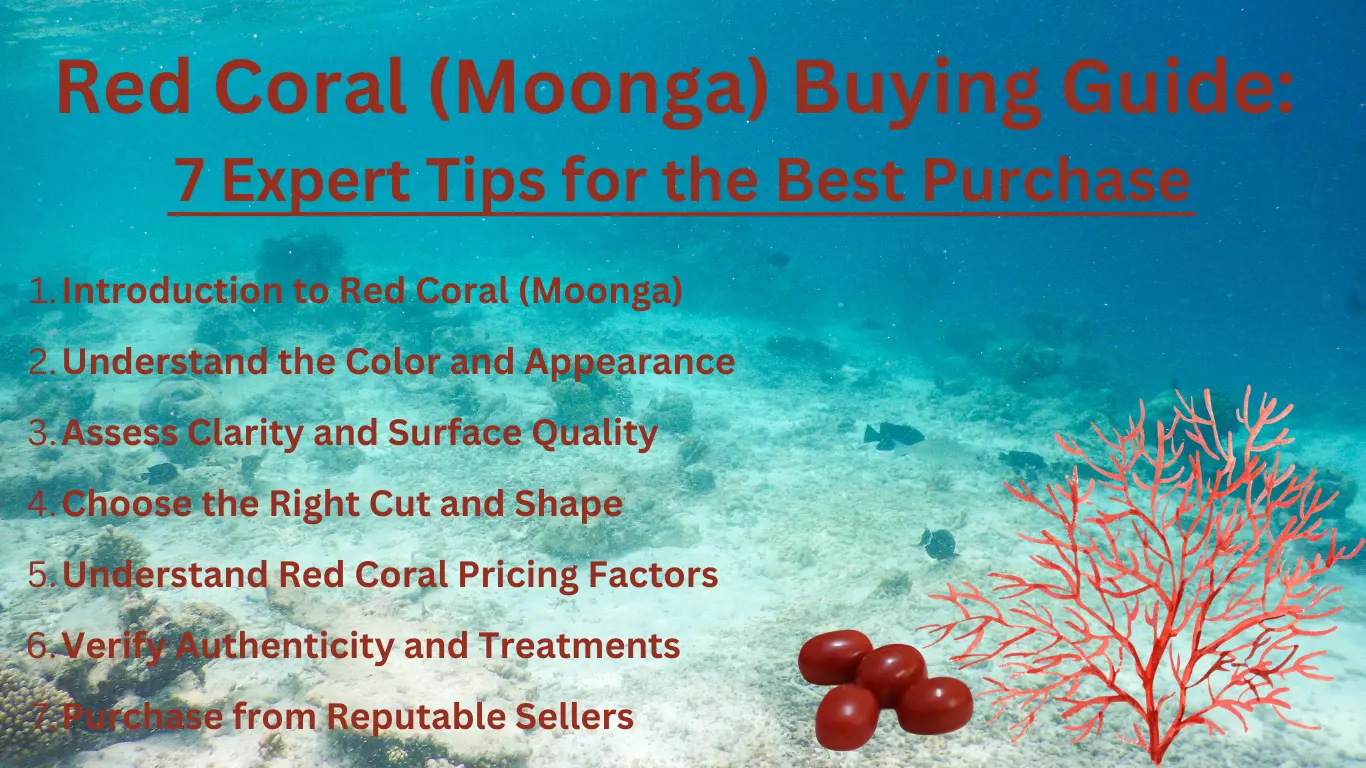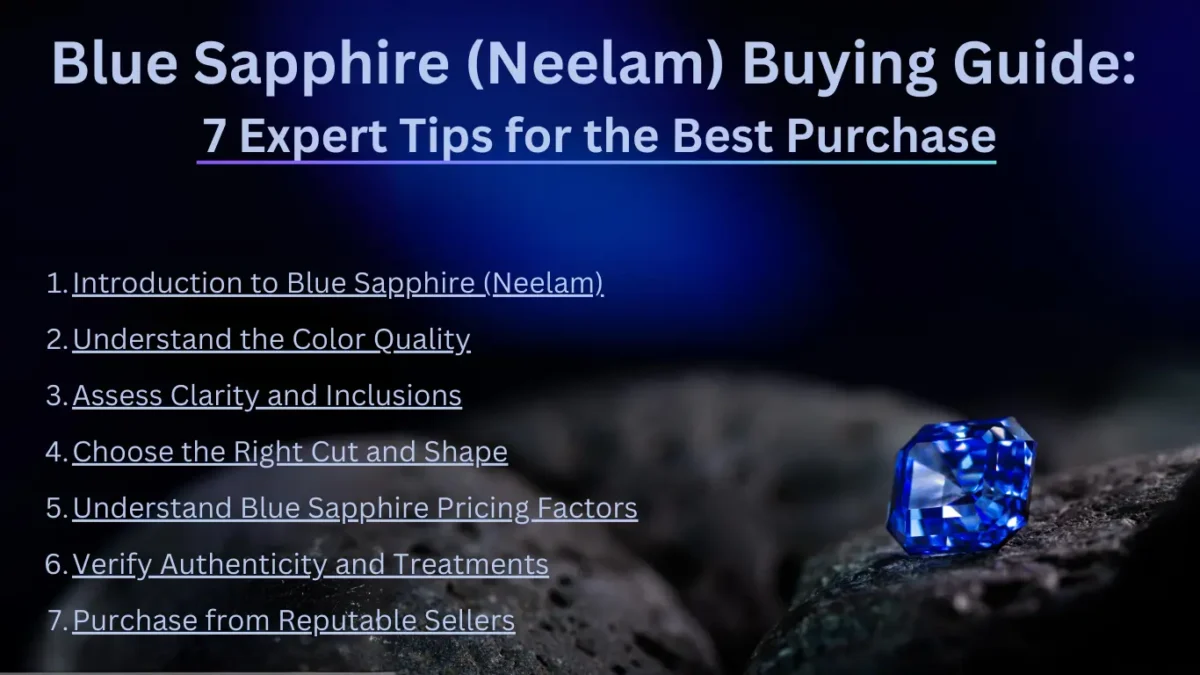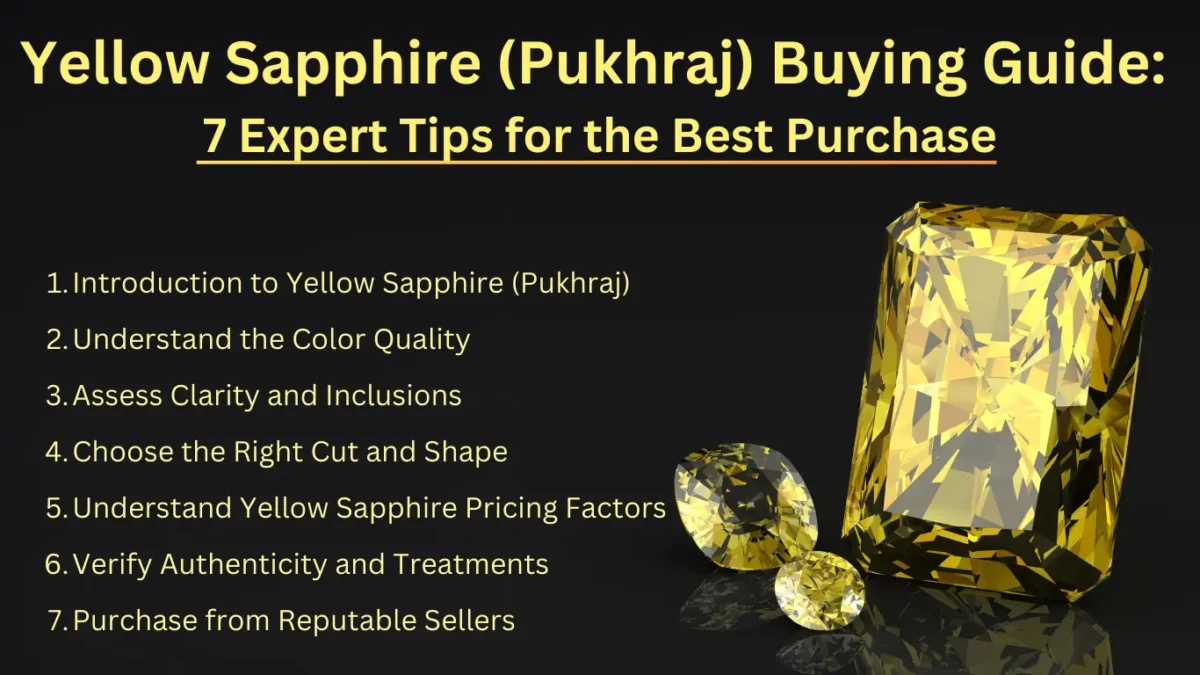Red Coral (Moonga) Buying Guide: 7 Expert Tips for the Perfect Gemstone
Red Coral, known in India as the powerful Moonga stone, is a unique organic gemstone born from the depths of the ocean. Unlike mineral gemstones, it is the hardened skeleton of marine polyps. Revered for its vibrant red hue and potent astrological connection to the planet Mars (Mangal), Moonga is worn to boost energy, courage, and ambition. This expert guide provides in-depth knowledge on how to evaluate its quality, understand its different origins and shapes, and buy an authentic Red Coral stone with complete confidence.

The finest Moonga stones exhibit a rich, uniform, and blemish-free red surface.
Red Coral (Moonga) at a Glance
| Gemstone Type | Organic (Precious Coral) |
| Indian Name | Moonga, Praval |
| Ruling Planet | Mars (Mangal) |
| Metaphysical Properties | Courage, Vitality, Leadership |
| Hardness | 3 – 4 on the Mohs Scale (Very soft, requires special care) |
The Astrological Significance of Moonga
In Vedic astrology, Red Coral is the primary gemstone for the planet Mars (Mangal). Mars represents courage, energy, ambition, and physical strength. Wearing a Moonga stone is believed to pacify malefic effects of Mars and harness its positive energies. It is highly recommended for people in professions that require immense physical and mental stamina, such as athletes, police officers, soldiers, and surgeons. It is also beneficial for those suffering from a lack of confidence, fear, or indecisiveness.
How to Buy an Original Moonga Stone: A Step-by-Step Guide
Step 1: Evaluate the Color – The Most Vital Factor
Color is the single most important factor in determining a Moonga’s quality and price. The most sought-after specimens display a deep, uniform red, often described as “ox-blood” red. The color should be consistent across the entire surface, without any spots or discoloration.
- Top Color: A deep, vibrant, and uniform red is the ideal. An even, pleasing orange-red is also highly valued.
- Lower Quality: Stones that are pale, pinkish, or have visible white or dark spots are less desirable and less valuable.
Step 2: Understand Red Coral Origins and Their Characteristics
The origin of a Red Coral has a significant impact on its quality and price. The three most renowned sources are:
- Italian Red Coral: Sourced from the Mediterranean Sea, Italian coral is the historical benchmark for top quality. It is famous for its deep, rich, and uniform “ox-blood” red color. It is highly saturated and considered the most desirable for both jewelry and astrological purposes.
- Japanese Red Coral: Also a top-tier variety, Japanese coral is known for its excellent quality and luster. Its color is typically a slightly lighter, more orange-red compared to the deep red of Italian coral. High-quality specimens can sometimes have a white core, which is a natural characteristic.
- Taiwanese Red Coral: Generally more affordable, Taiwanese coral is often found in lighter shades, ranging from pinkish to a light orange-red. While beautiful, it typically does not have the deep color saturation of its Italian or Japanese counterparts.
Step 3: Assess the Surface Quality and Luster
As an opaque organic gem, the surface of a Red Coral is critical. A high-quality Moonga should be completely free of pits, cracks, and blemishes. It should have a smooth, polished surface with a fine, porcelain-like luster. Run your finger across the stone; it should feel perfectly sleek.
Step 4: Understand the Importance of Shape and Cut
Red Coral is typically cut into smooth, polished cabochons. While oval and capsule shapes are common, the shape is a major pricing factor due to astrological beliefs.
Astrological Insight: The triangular shape (Tikona Moonga) is considered the most powerful and astrologically effective form. Cutting a triangular shape from a cylindrical coral branch results in significant wastage of the raw material. This combination of high demand and high wastage makes the triangular Moonga the most expensive shape per carat.
Step 5: Understand Pricing Factors
The moonga stone price is determined by a combination of factors:
- Shape: Triangular Moonga is the most expensive, followed by oval and capsule shapes.
- Color: Deep, uniform red is the most significant price factor.
- Surface Quality: A clean, blemish-free surface commands a much higher price.
- Origin: Italian Red Coral and Japanese Red Coral are the most expensive.
- Size: The price per carat increases significantly for larger stones of high quality.
Step 6: Verify Authenticity (Natural vs. Imitations)
It is essential to distinguish genuine Red Coral from the many imitations on the market.
- Common Imitations: Be wary of materials like dyed bamboo coral, plastic, glass, and reconstituted coral (coral powder mixed with resin).
- Identification: Under magnification, natural coral often shows a fine, wood-grain-like texture. A drop of lemon juice will cause a genuine (untreated) coral to bubble, but this test can damage the stone.
Step 7: Demand a Certificate and Buy from a Reputable Seller
The only certain way to ensure you are buying a natural, original red coral stone is through a certificate from a reputable gemological laboratory. Always purchase from a trusted seller who provides full disclosure about the stone’s origin and guarantees its authenticity.
Why Trust Ratna Gems for Your Red Coral?
At Ratna Gems, we are committed to providing authentic, high-quality astrological gemstones with complete transparency. We are your trusted source because we offer:
- Certified Authentic Red Coral: Every Moonga stone is certified by a recognized lab and comes with a Lifetime Authenticity Guarantee.
- Transparent and Honest Pricing: We offer competitive prices for genuine Moonga with full disclosure on quality and origin.
- Unmatched Customer Support: Our experts are here to guide you, and our 7-day return policy ensures your complete satisfaction.
Frequently Asked Questions
Who should wear Red Coral (Moonga)?
According to Vedic astrology, Moonga is recommended for individuals with a weak or malefic Mars in their horoscope. It is beneficial for people in professions requiring courage and physical energy, and for those facing issues with debt or enemies.
Which is better: Italian or Japanese Red Coral?
Both are considered top quality. Italian coral is famous for its deep “ox-blood” red, making it the traditional choice for the most powerful astrological benefits. Japanese coral is also excellent, typically with a slightly more orange-red hue. The choice often comes down to personal preference and budget.
Why is a triangular Moonga so expensive?
A triangular shape is astrologically considered the most potent form for a Moonga. However, cutting this shape from a naturally cylindrical coral branch results in a very high amount of wastage of the raw material. The high demand combined with this high wastage makes it the most valuable shape per carat.
How can I tell if a Red Coral is real?
A lab certificate is the best way. Natural coral often has a fine grain-like texture visible under magnification. A common imitation, dyed bamboo coral, will often show joint-like structures. Plastic imitations will feel warm and light.
How should I care for my Moonga jewelry?
Clean your Red Coral only with a soft, damp cloth. Never use soap, chemicals, or ultrasonic cleaners. Avoid contact with cosmetics and perfumes. Store it separately in a soft pouch to prevent scratches.






Red Coral (Moonga) is a powerful Mars gemstone, ideal for Aries, promoting strength and success. This blog beautifully explains its benefits and the right way to wear it for maximum impact. Thanks Ratna Gems for a great information.